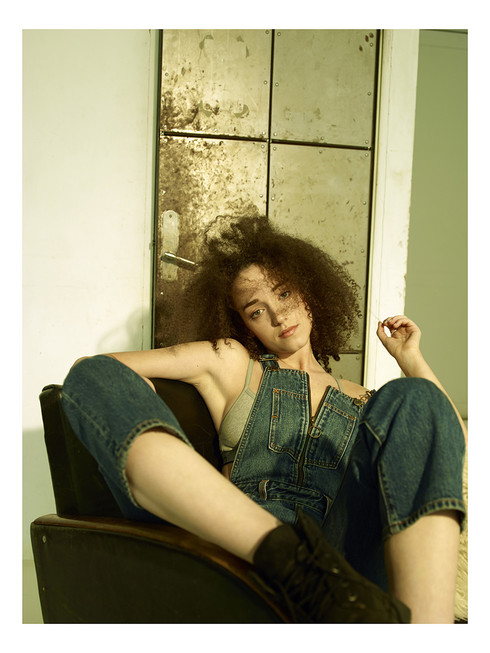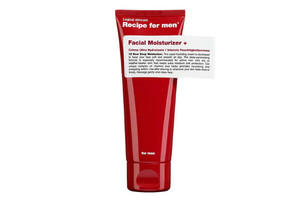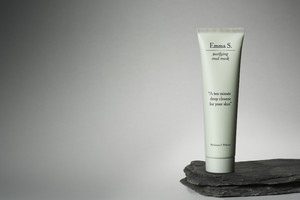"Confluence" by Tina Berning and Michelangelo Di Battista
Written by Solène Le BarsGerman artist Tina Berning started her career designing album covers for the music industry. Soon, however, she began to concentrate on her own picture worlds, found her expression in art, and quickly become an illustrator in high demand worldwide. Her work has been published in renowned anthologies. She has contributed work to advertising campaigns for clients such as Mercedes-Benz, Tiffany and Co., Shiseido…, and her work regularly appears in publications such as the New York Times, Architectural Digest and Vogue Italia.
Italian photographer Michelangelo Di Battista, early in his fashion career traveled internationally for his numerous fashion and advertising assignments. The dedication and passion towards his craft has attracted some of the fashion and beauty industries most prestigious names including Versace, Moschino, Guerlain, Clarins, L’Oreal, Givenchy, Nina Ricci, Lacoste, Tod’s and Hugo Boss, to name but a few. He has contributed to some of the world’s most prominent publications across the globe including Italian Vogue, German Vogue, Japanese Vogue, Chinese Vogue & Harpers Bazaar.
Since they met in 2007 for a photo shoot for Italian Vogue, Tina Berning and Michelangelo Di Battista have created unique artworks that blur the boundaries between photography, illustration, painting and crafts. Instead of subjecting Di Battista’s photography to digital image processing, Berning expands analog on the images with drawings and texts, by scratching, painting or even weaving the surface. Working individually in different countries, together they create a shared universe. The title of their exhibition at Fotografiska, Confluence, refers to the flowing together of two creative streams.
Would you please explain the title “Confluence” of your Fotografiska exhibit, taking place from June 2nd until August 27th. , and describe what it explores?
MDB: It is the confluence of two different techniques, and two different way to express one's creativity.
TB: The portraits are photos, illustrations and paintings in one. The idea is to underline the beauty of the models shown in a photo, all of whom have been reworked by hand without using digital technology.
MDB: It is the sense of two different points of view of different aesthetic experiences and suddenly mixed together. We merged them and it came out like something unexpected.
How many pieces are displayed in this exhibition?
MDB: Twenty-eight works are on display in the exhibition. The show is of only unique pieces, some of them are recent and some other from 2010; our first exhibition we made in Berlin at Camera Work Gallery. The general idea was to show pieces that we collected together because they have been only shown once.
TB: And when we were invited to exhibit in Stockholm, we thought about doing something to get connected to the museum. So Michelangelo had a shooting last January with Swedish models and here, one corner is dedicated to these girls.
Do you work individually in different countries or together?
MDB: I live in London, she lives in Berlin.
TB: There are two separate working processes too. He does the pictures and then I received them and create my layers.
What are your separate roles?
TB: This project is about creating new works out of existing ones. I use his photos as a template for my interpretations. I’m seeking to surprise the observer and highlight the multi-faceted nature of female beauty. It’s an honor to have the chance to leave my comments and traces on Michelangelo’s beautiful photos by scratching their surfaces, adding layers of paint or cutting them to pieces.
MDB: I just love to see what Tina adds to my photographs, how she interprets them with her skillful and artistic creativity. Whether it’s with thick charcoal lines, colorful woven ribbons, texts or something completely different.
Michelangelo, did you shoot photos for this joint project in a different way?
MDB: Definitely! Models are like always quite playing. It is more about the position of head, very simple in a way, so then when Tina creates her layers over it, they meet together. I know that when I shoot photos for this joint project I compose them in a different way; the photograph functions as her canvas.
Tina, are you scared sometimes of ruining Michelangelo’s photos?
TB: It’s a challenge! I only have one print and that’s the deal. If I do something and it doesn’t turn out how I wanted it then I have to react on it. It’s the process of being absolutely focused. There’s no deception. I haven’t hidden anything, you can see everything I’ve done. The splurges of paint or black and grey dust. Each picture has a challenge to support, interpret, explore and annotate what Michelangelo had captured before. And this is what I like. The end result is a whole different picture and product. It’s sometimes minimal things to do but suddenly the whole expression of the pictures changes.
You predominantly add layers of pink and red paint, why?
TB: For one main reason. It comes from reacting from the black and white.
Do you make sketches before?
TB: Yes. I get the file of the photos before so I always know what I’m working with. I think about a concept. Sometimes, I have hung them up during 3 weeks on my wall, walked around and started getting a relationship with the pictures. When you know you only have one chance; it’s exciting when I start and I like this.
It must have been interesting to see people react to your collaboration?
TB: It is very important to have direct contact with audience. When we are working for clients we have only limited audience because when you’re booked they only call you when they like your work.
MDB: Or a specific image they have seen related to what they looking for. It’s very contaminated in the way of their choices.
TB: So when you have an exhibition, like ours in Berlin and now in Stockholm, you can get a feedback quite a few times and people didn’t know me of course, so I was listening every discussion which was so funny because people there were totally enthusiastic or bored or whatever by some pieces, it was really interesting to hear spontaneous comments.



















